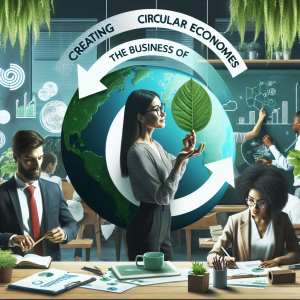Elevating Eco-Friendly Fashion
Elevating eco-friendly fashion involves a harmonious blend of sustainability, innovation, and style. As the fashion industry accounts for roughly 10% of global carbon emissions, spotlighting its transformation toward environmentally conscious practices is imperative. This movement is driven by various factors that affect every level of production, from sourcing materials to manufacturing processes, to ensure that the fashion industry minimizes its ecological footprint.
Sustainable materials form the backbone of eco-friendly fashion. The use of organic fibers such as organic cotton, hemp, and bamboo reduces dependency on pesticides and synthetic fertilizers. These materials are cultivated under conditions that are more in tune with nature, preserving soil health and maintaining biodiversity. For instance, organic cotton uses 91% less water compared to conventional cotton farming. Meanwhile, innovations like Tencel—produced from sustainably harvested wood pulp—exhibit a reduced water and energy footprint during their production process, showcasing a closed-loop system where solvents are recycled.
The production process itself has seen significant advancements. Traditional dyeing techniques and finishes often discharge hazardous chemicals into waterways, posing ecological risks and health hazards. In response, eco-friendly dyeing methods, such as digital printing and waterless dyeing, have emerged. Digital printing uses less dye and water, while air-dye technology completely eliminates water use, aligning with eco-friendly fashion goals. Notably, the use of greener chemistry reduces environmental harm by adopting biotechnology and less toxic alternatives, ensuring that the process remains environmentally sound.
The rise of a circular economy model is pivotal in eco-friendly fashion. This model emphasizes designing out waste and pollution while keeping products and materials in use. Brands like Patagonia and Stella McCartney have pioneered the use of recycled materials to create new garments. For example, recycled polyester, which is derived from plastic bottles, reduces dependency on virgin resources and diverts waste from landfills. Similarly, initiatives encouraging repair, resale, and recycling of clothing effectively extend product lifecycles. This prolongation mitigates the environmental impact associated with fast fashion trends, which promote frequent turnover and disposable items.
Another significant aspect of eco-friendly fashion is the ethical treatment of workers. Ensuring fair wages and safe working conditions for laborers in garment manufacturing is crucial. Transparent supply chains help brands stay accountable for the socio-economic impacts of their activities. Certification programs like Fair Trade and the Global Organic Textile Standard (GOTS) provide benchmarks for eco-friendly and socially responsible production. These certifications assure consumers that their purchases support sustainable practices and equitable labor conditions.
Technology plays an instrumental role in advancing sustainable fashion. 3D printing is one of the groundbreaking technologies steering eco-friendly fashion toward new possibilities. This technology aids in creating customizable and made-to-measure garments, effectively reducing waste. By manufacturing only what is demanded, it eliminates overproduction and excess inventory. Virtual fashion, including digital avatars and clothing for online personas, further showcases potential for reducing the environmental toll of producing physical garments, providing an alternative that aligns with digital consumption trends.
Consumer awareness and demand are crucial to propelling eco-friendly fashion forward. Today’s consumers are increasingly inclined to purchase from brands that reflect their values, thereby driving change within the industry. Education in sustainable practices—such as understanding the impact of one’s wardrobe and opting for quality over quantity—empowers consumers to make thoughtful decisions. Social media platforms serve as powerful tools for spreading awareness and fostering a community that advocates for sustainability in fashion.
Achieving scale in sustainable fashion is facilitated by collaborations across sectors. Partnerships between fashion brands, technology companies, and environmental organizations fund research and development for green innovations. Notable collaborations include Levi’s use of Water




